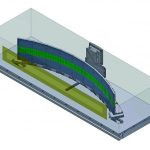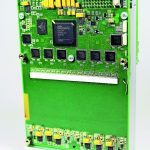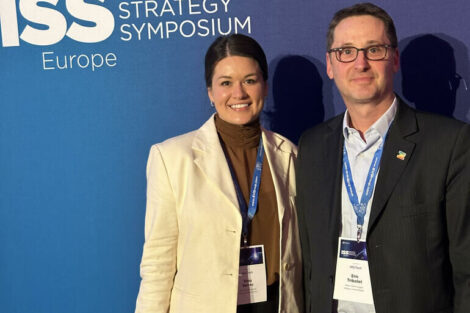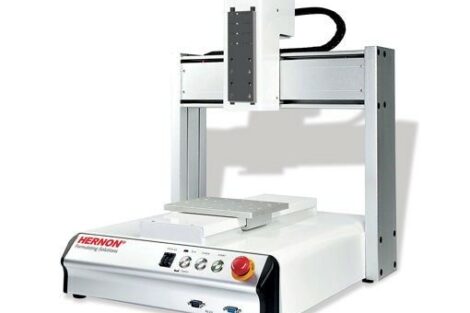The application of X-ray inspection in the industry is a tried and proven way to inspect components and materials. Researchers of the Fraunhofer Institut in Fuerth (Germany) have now developed a novel X-ray detector capable of delivering sharp and clear high-quality 3D images (using computer tomography, CT) of large objects within very short cycles practically in real time. This will allow to precisely describe the hidden processes going on inside materials and/or defects of all kinds in order to provide a reliable way of detecting minuscule faults.
In medicine diagnosis procedures, for example, X-rays provide high-resolution images of human body’s insides to help doctors finding the roots of critical health problems since a long time; more than a century now. Likewise, production and maintenance industries are going now to use X-rays more and more – as a reliable, non-destructive way of seeing what’s hidden inside materials and components and to check for cracks, defects and other irregularities not visible to the naked eye. However, industrial applications draw upon different technologies that are of course not used in the medical field where X-ray machines have been specifically designed for human objects to inspect; on the other hand, industrial X-ray inspection equipment is particularly used to analyze a wide range of technical objects that vary very much in their sizes and material compositions. These exacting requirements in the area of engineering applications call for high-performance, fast-operating X-ray equipment that is likewise very flexible.
Multi-line X-ray detector delivers solution
In order to give a technologically outstanding answer to these challenges, researchers at the Development Center for X-Ray Technology EZRT, a division of the Fraunhofer Institute for Integrated Circuits IIS in Erlangen/Germany, have developed Mulix (multi-line X-ray detector). This X-ray target for industrial computer tomography (CT) is based in parts on the design of medical X-ray devices. “Our challenge was to combine high image quality with a high degree of flexibility,” explains Frank Nachtrab, head of design X-ray sensors and X-ray methodology at the EZRT. Mulix combines two proven concepts already in use, rendering it a kind of hybrid solution that incorporates elements of line and flat-panel X-ray detectors already commonly used in the industry. The researchers now have a plan what to achieve with their development in the near future, as Frank Nachtrab says, “We’ve had very promising results with our demonstrator equipment and have shown that Mulix reliably works. And now we’re now looking for industrial partners to help develop a Mulix prototype.”
Combining the benefits of two different methods
Single-line detectors use a fan-shaped beam to X-ray a certain section of an inspection object, whereas flat-panel detectors are working with a cone-shaped beam that encompasses the entire object. There are pros and cons to both solutions. A flat-panel detector will quickly give a 2D image of the entire object. However, it causes scattered radiation – in other words, rays deflected by the inspection object – which greatly impairs image quality. A single-line detector, on the other hand, is less sensitive for scatter and will therefore deliver extremely sharp images. But since it captures only a small portion of the entire object, this scanning method is much more time-consuming. “We have combined the benefits of the two solutions,” explaines researcher Nachtrab. The novel equipment is therefore based on a detector with multiple lines, a design that until now has been used only in the medical field. Multiple-line detectors work according to the same principle as their single-line counterparts, but can also cover larger object areas and thus radically reduce the scanning time. MULIX uses a total of 256 lines, allowing it to scan larger inspection objects such as machine parts very quickly. What’s really remarkable is that the new detector delivers images so fast, it becomes possible to use CT techniques to make a 3D-scan of the object almost in real time.
Mulix opens up new application opportunities in materials research and quality assurance, which would allow the automotive , electronics and defense industries, aerospace and research institutions to observe defect, failures and processes going on within the materials they use. “When testing mechanical properties such as tensile strength, we can use the images we get to see just how a compromising fault comes about,” resumes Frank Nachtrab. The researchers also came up with an innovative solution for the physical properties of the detector which “enhance the quality of the images further,” as he states. Unlike of today’s commercially available X-ray detectors, it is possible to adjust the shape of Mulix so it can form a bend around the object. This ensures the flexibility for industrial CT systems that have to be adapt to the various sizes and material properties of the huge variety of inspection objects.
Share:












